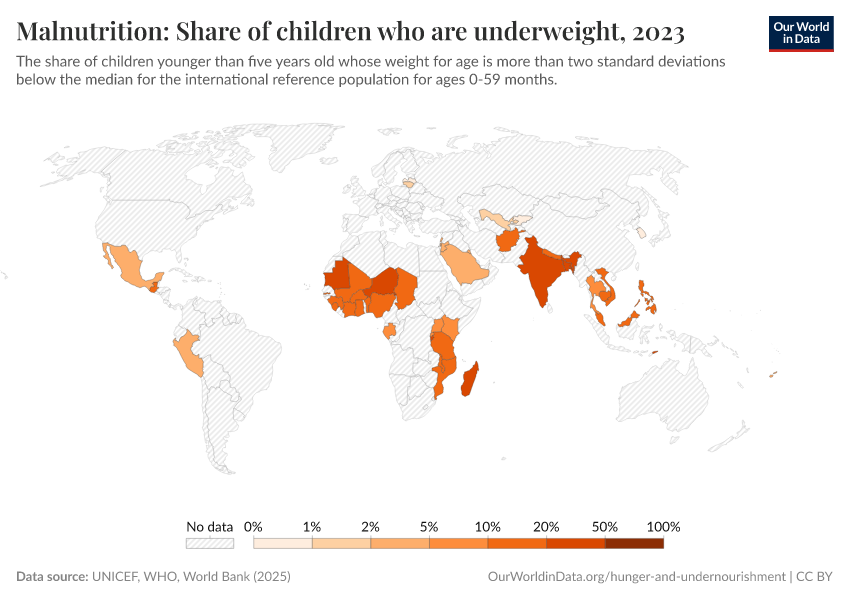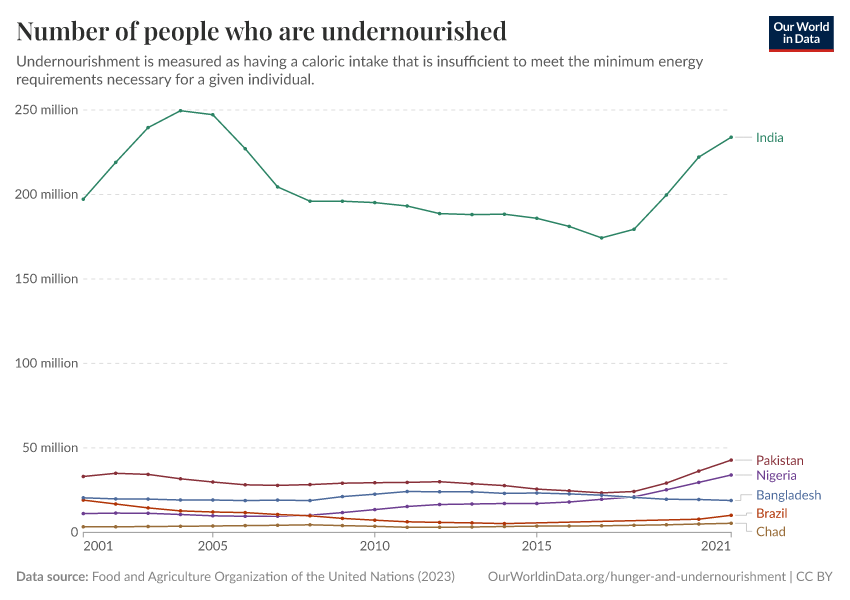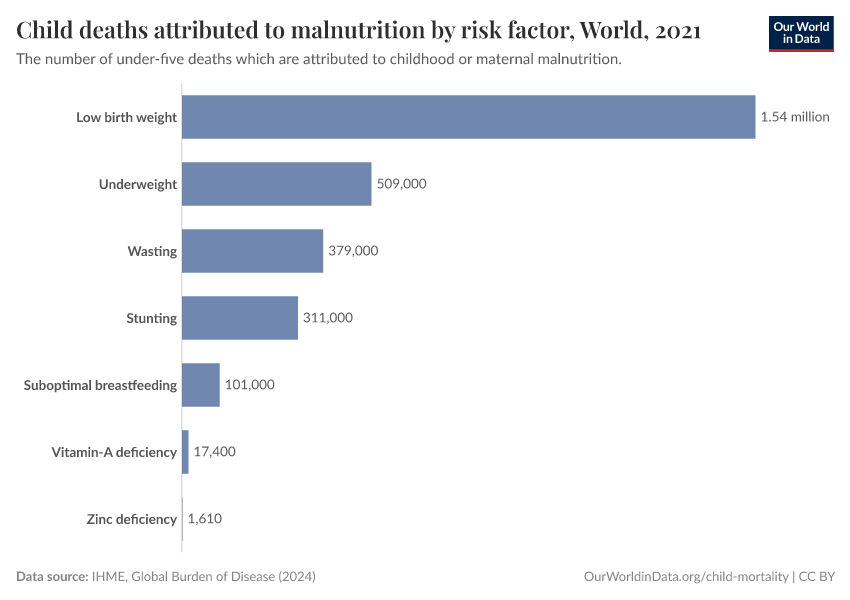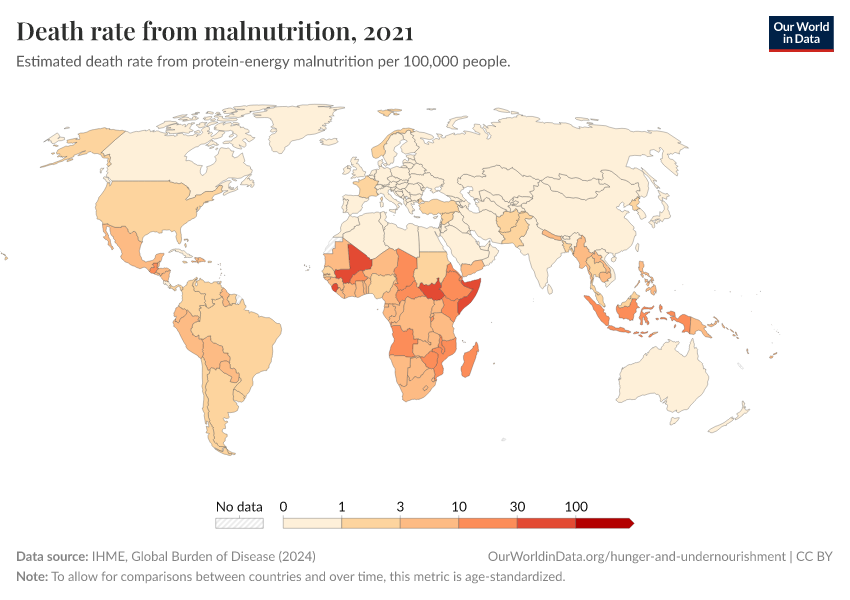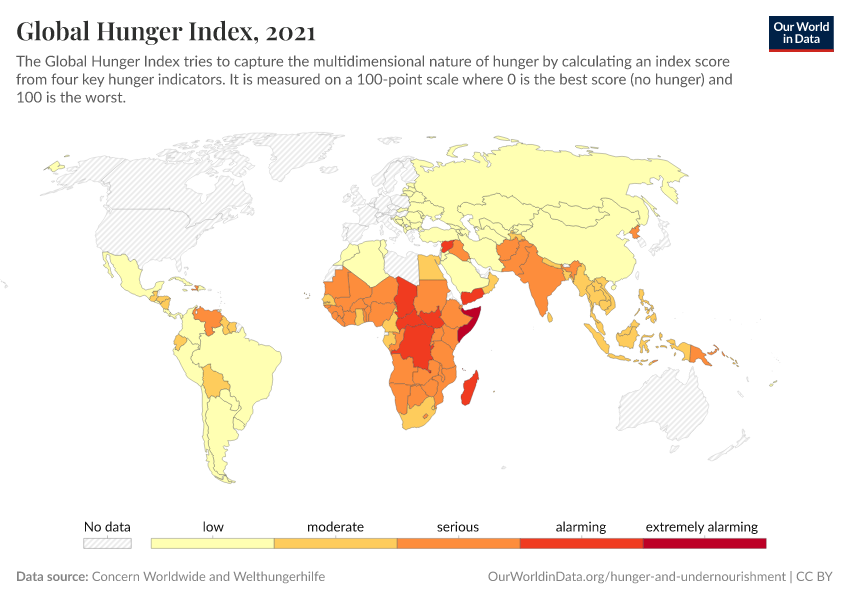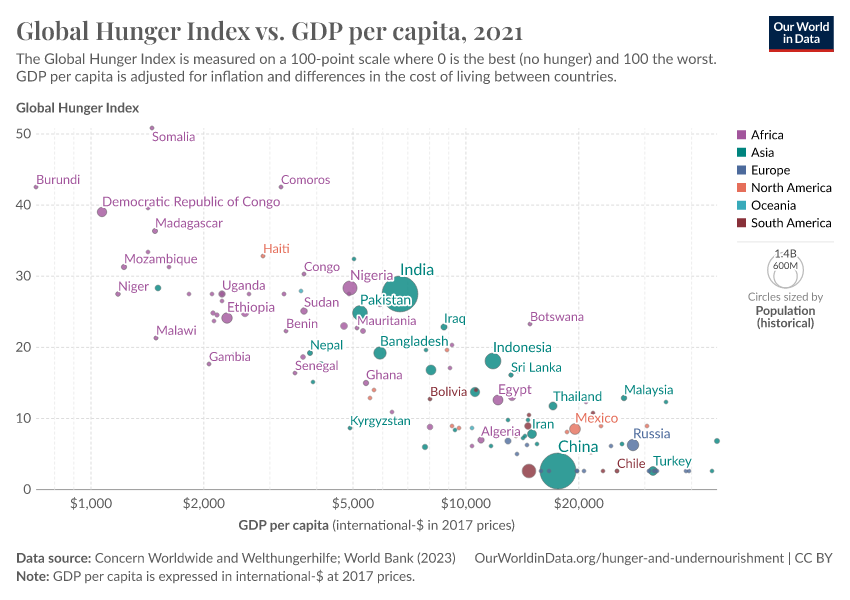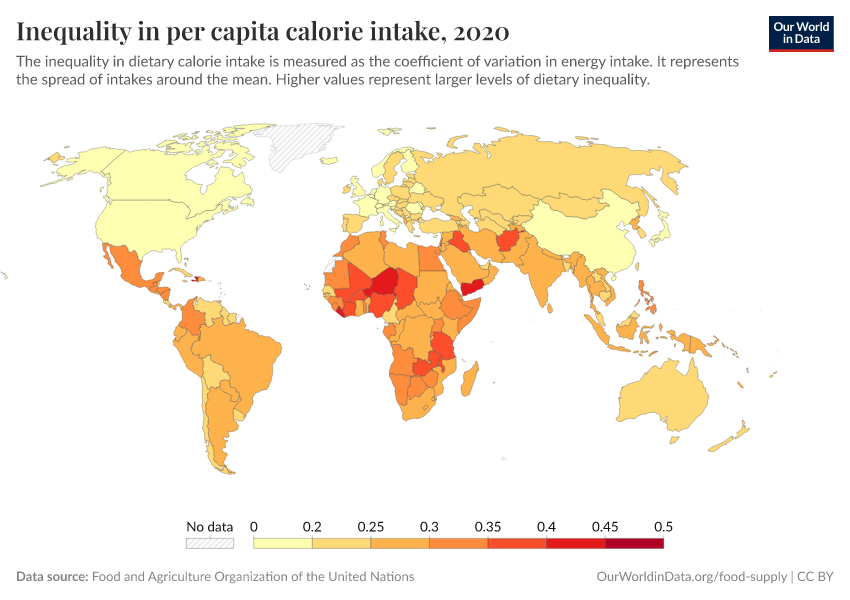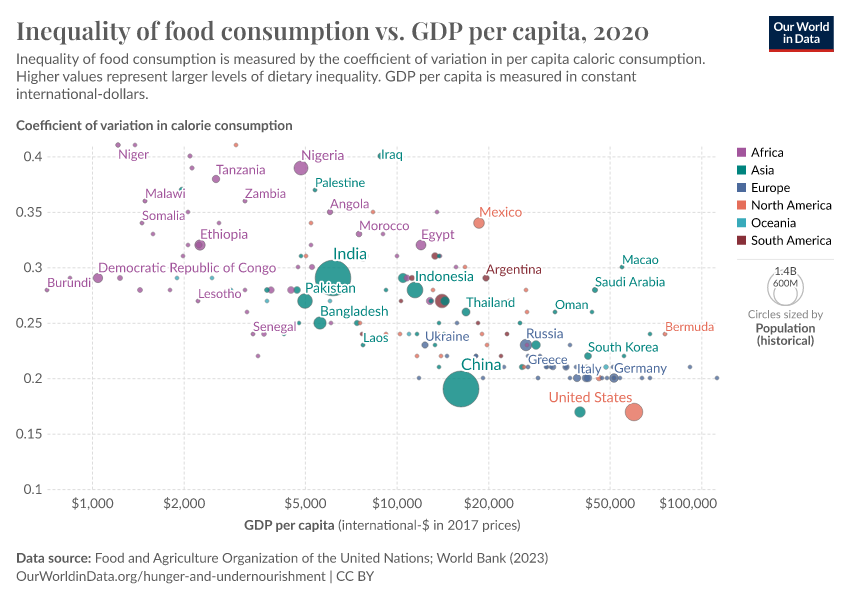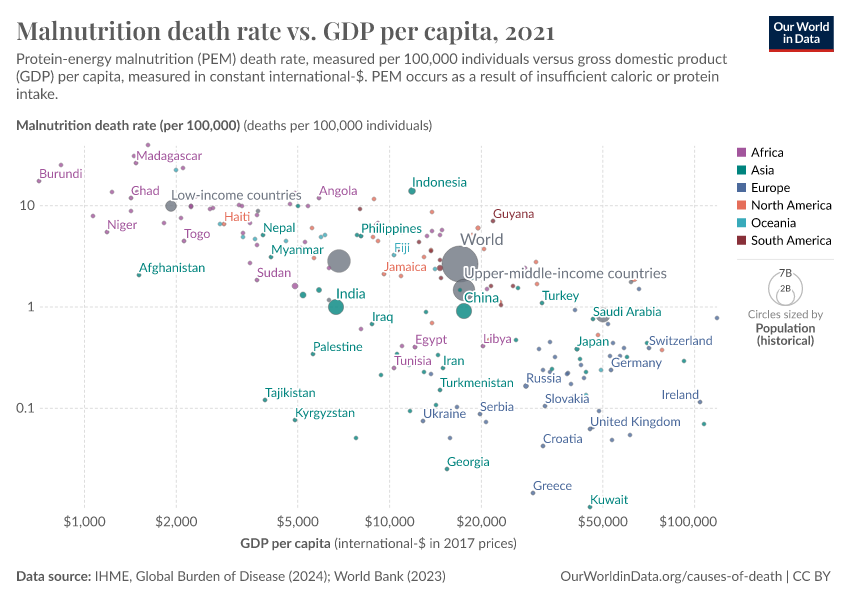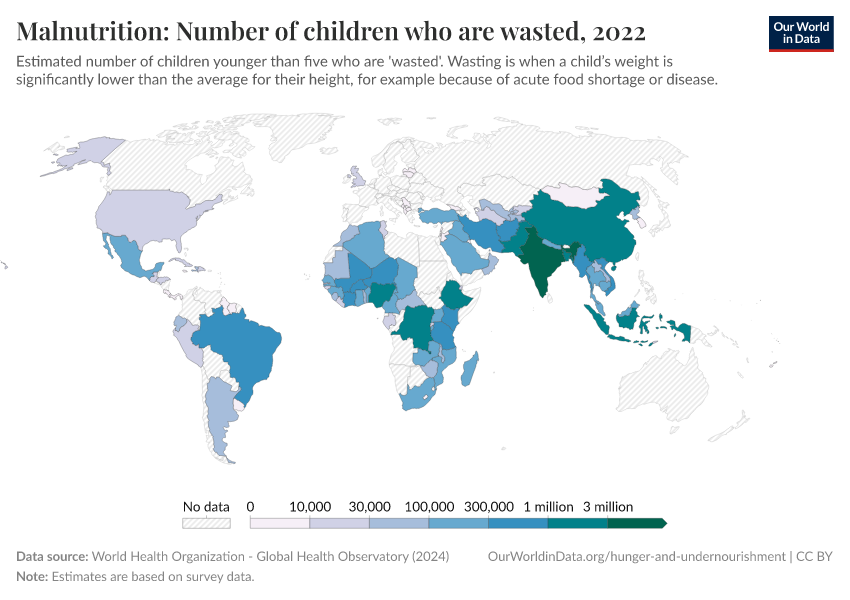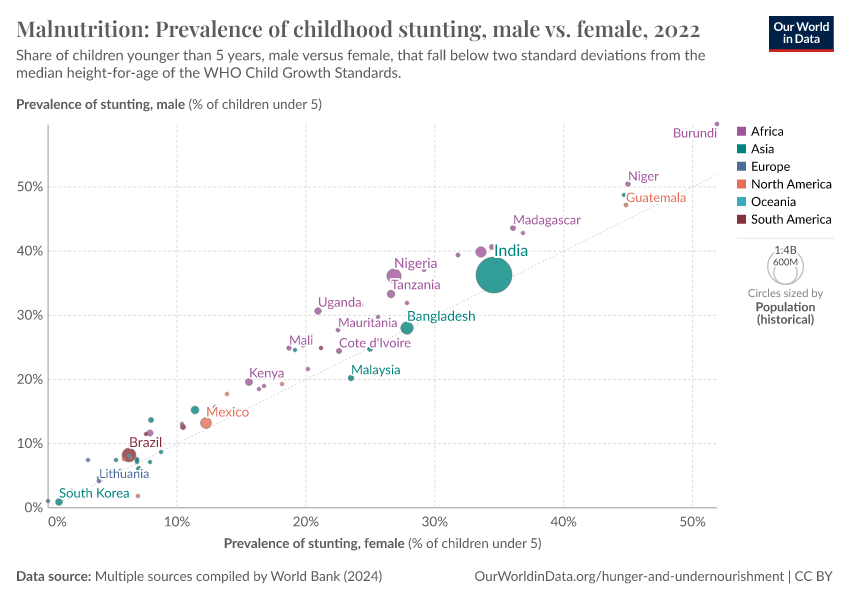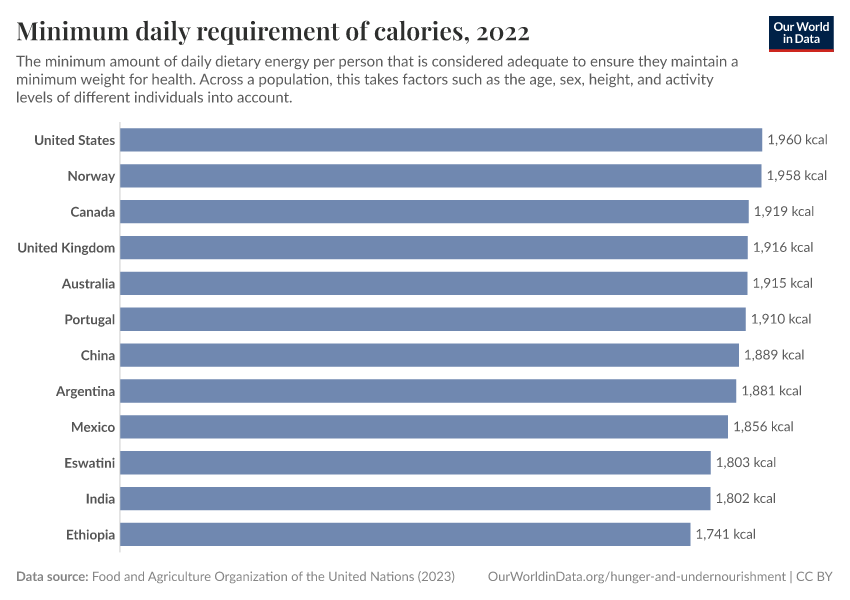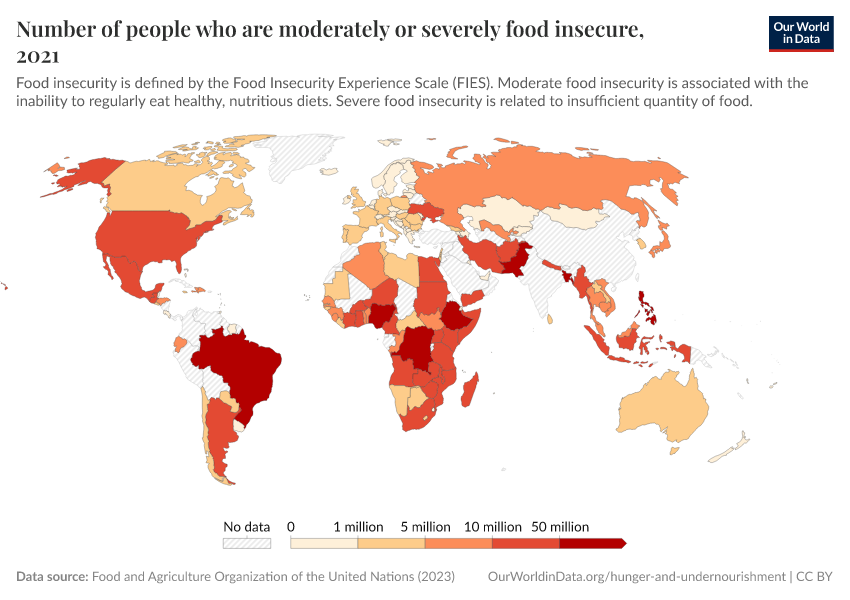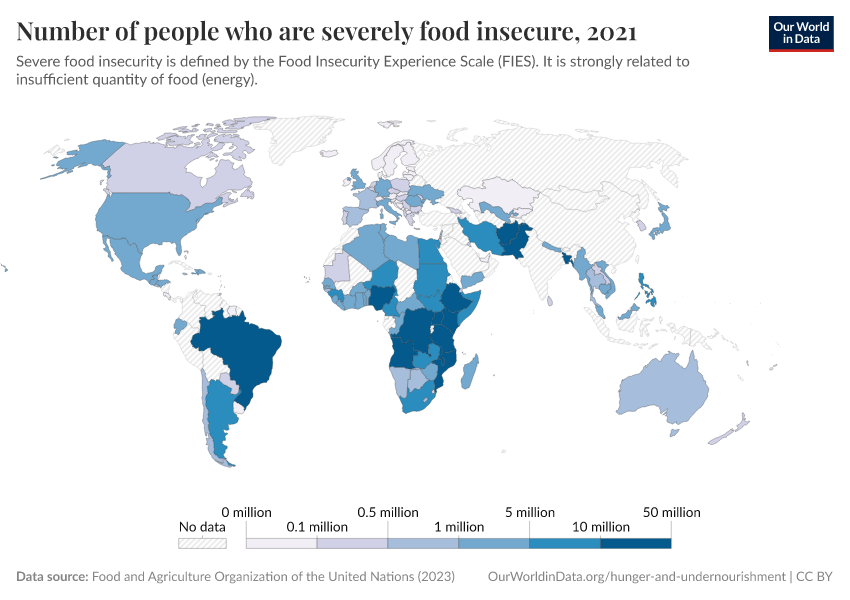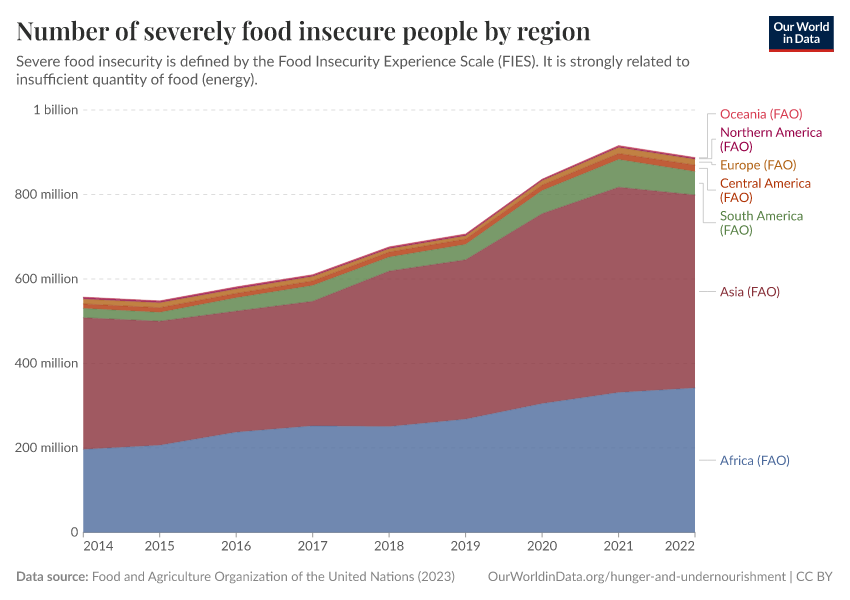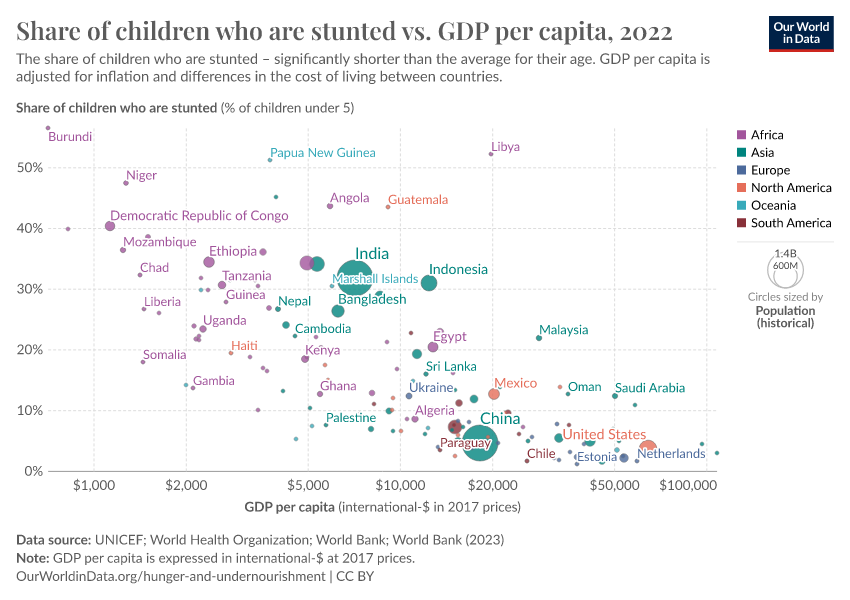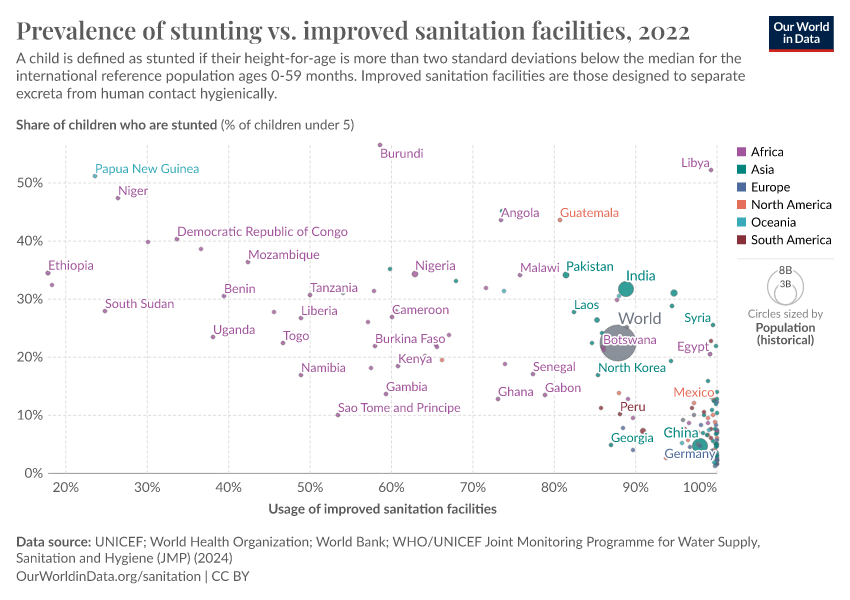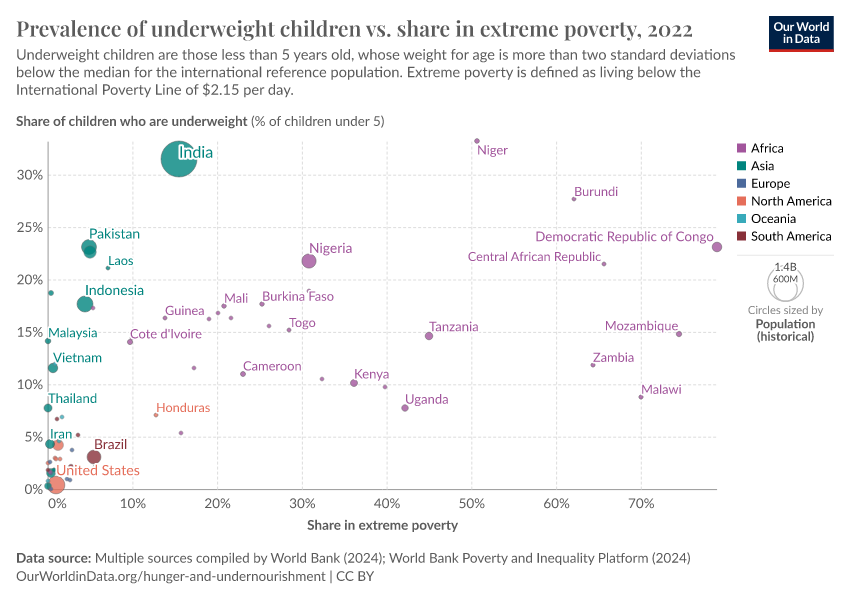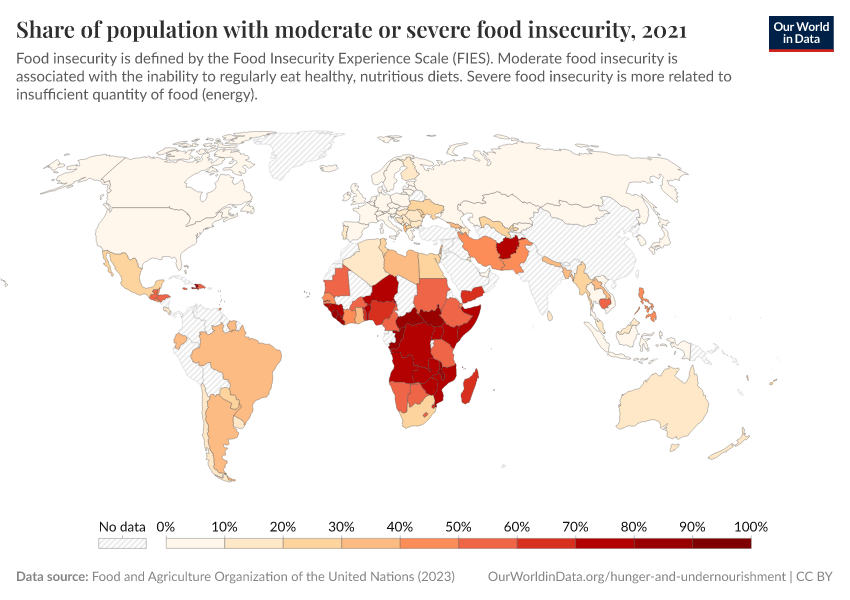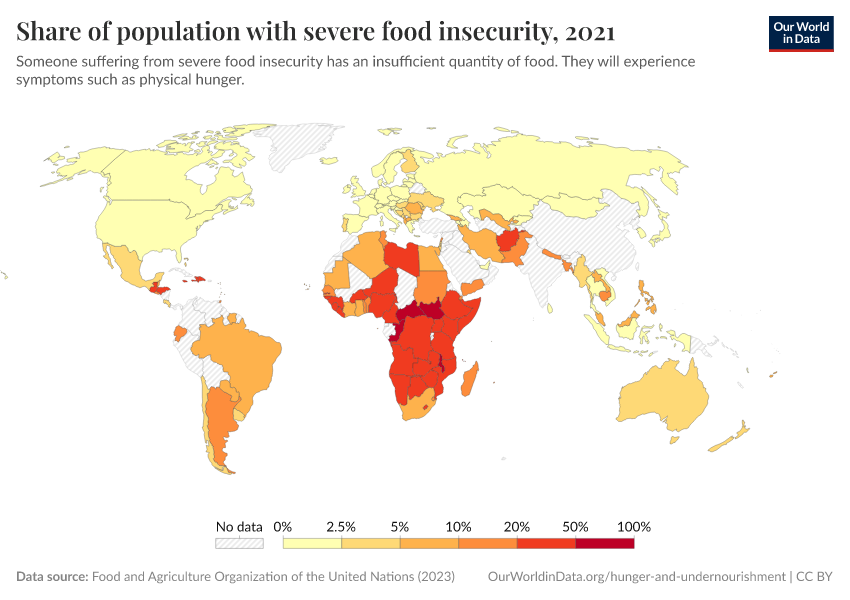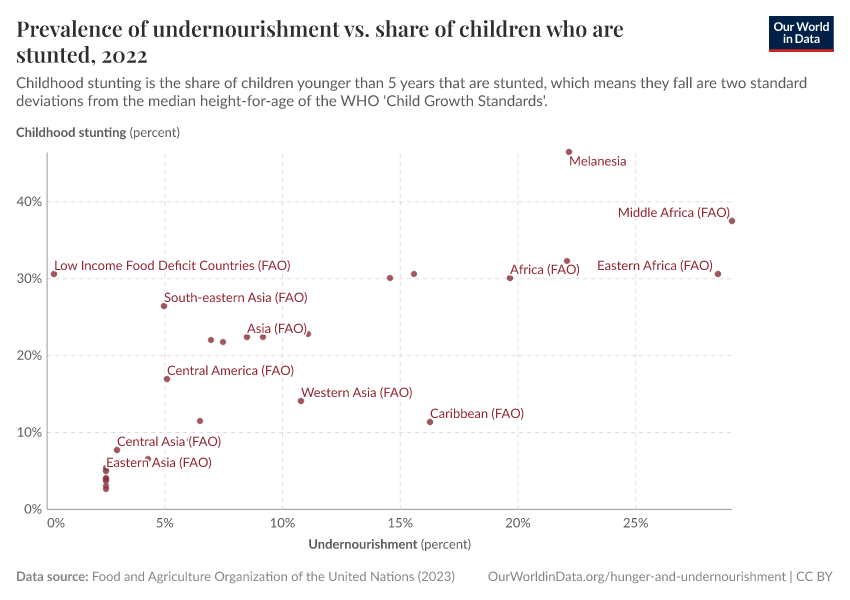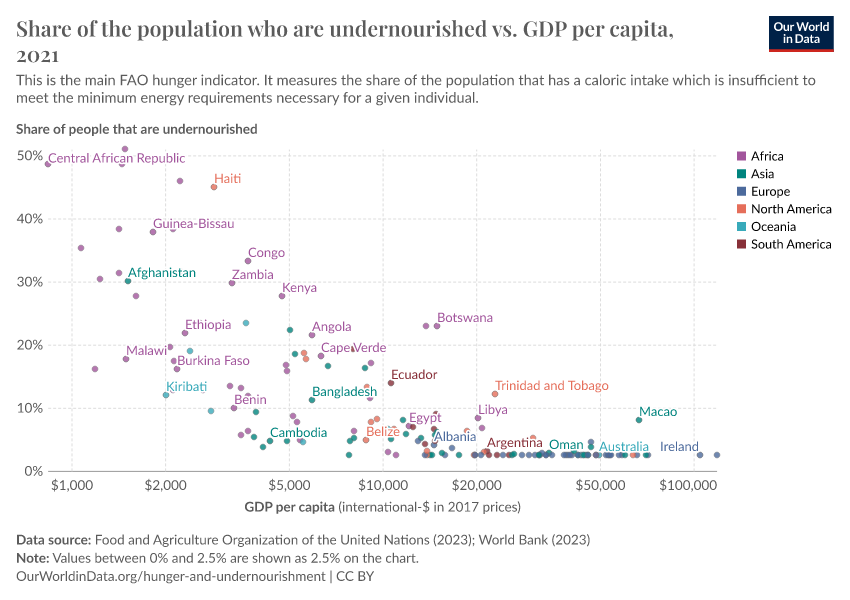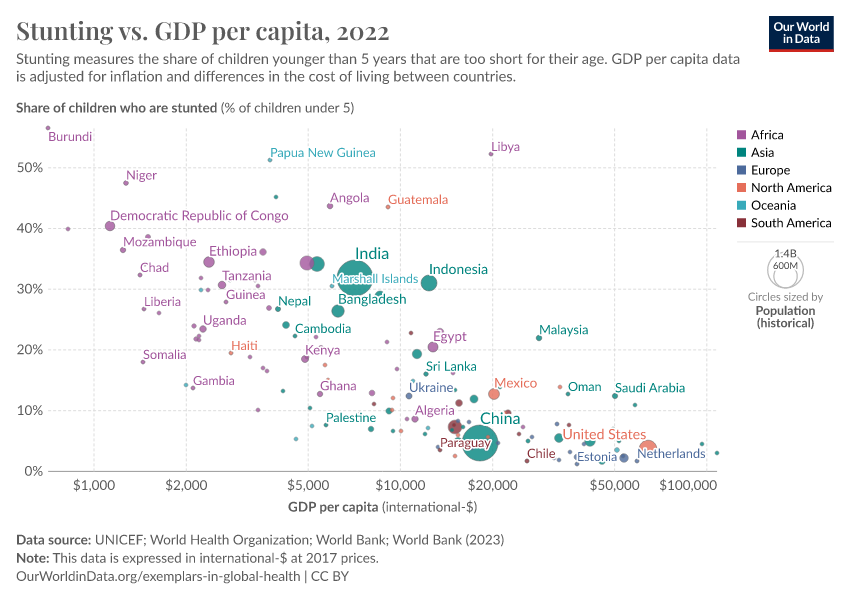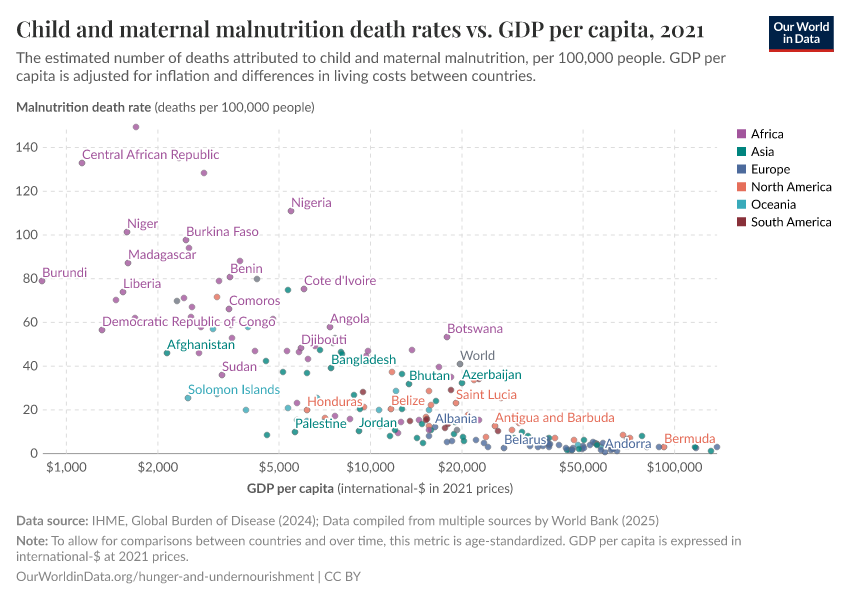Hunger and Undernourishment
What are the consequences of undernourishment and how can we make progress against hunger and undernourishment?
Having enough to eat is one of the fundamental basic human needs. Hunger – or, more formally, undernourishment – is defined as eating less than the energy required to maintain an active and healthy life.
The share of undernourished people is the leading indicator for food security and nutrition used by the Food and Agriculture Organization of the United Nations.
The fight against hunger focuses on a sufficient energy intake – enough calories per person per day. But it is not the only factor that matters for a healthy diet. Sufficient protein, fats, and micronutrients are also essential, and we cover this in our topic page on micronutrient deficiencies.
Undernourishment in mothers and children is a leading risk factor for death and other poor health outcomes.
The UN has set a global target as part of the Sustainable Development Goals to “end hunger by 2030“. While the world has progressed in past decades, we are far from reaching this target.
On this page, you can find our data, visualizations, and writing on hunger and undernourishment. It looks at how many people are undernourished, where they are, and other metrics used to track food security.
Research & Writing
Definitions and concepts of hunger and malnutrition
Key Charts on Hunger & Undernourishment
See all charts on this topicCite this work
Our articles and data visualizations rely on work from many different people and organizations. When citing this topic page, please also cite the underlying data sources. This topic page can be cited as:
Hannah Ritchie, Pablo Rosado, and Max Roser (2023) - “Hunger and Undernourishment” Published online at OurWorldinData.org. Retrieved from: 'https://ourworldindata.org/hunger-and-undernourishment' [Online Resource]BibTeX citation
@article{owid-hunger-and-undernourishment,
author = {Hannah Ritchie and Pablo Rosado and Max Roser},
title = {Hunger and Undernourishment},
journal = {Our World in Data},
year = {2023},
note = {https://ourworldindata.org/hunger-and-undernourishment}
}Reuse this work freely
All visualizations, data, and code produced by Our World in Data are completely open access under the Creative Commons BY license. You have the permission to use, distribute, and reproduce these in any medium, provided the source and authors are credited.
The data produced by third parties and made available by Our World in Data is subject to the license terms from the original third-party authors. We will always indicate the original source of the data in our documentation, so you should always check the license of any such third-party data before use and redistribution.
All of our charts can be embedded in any site.



